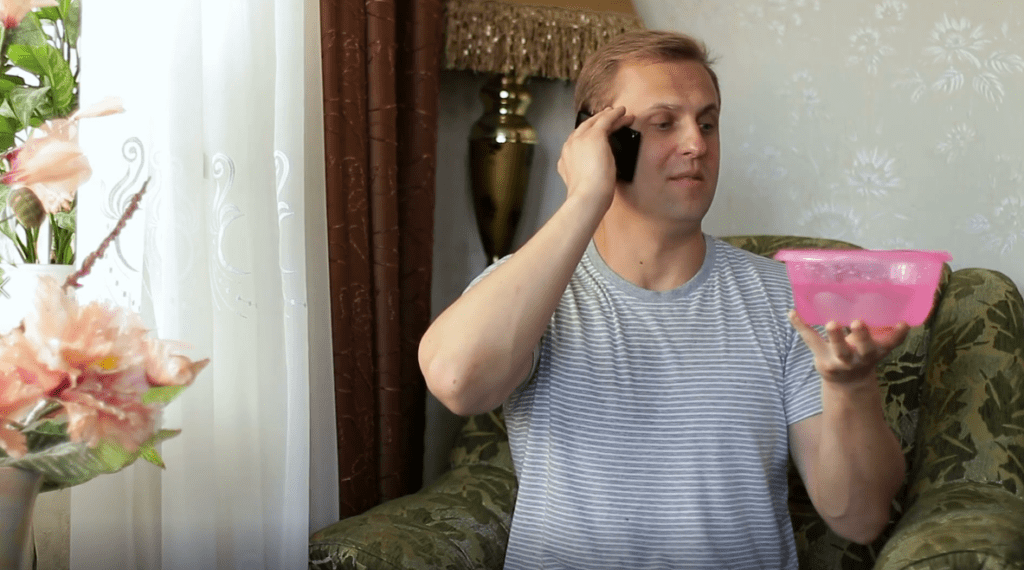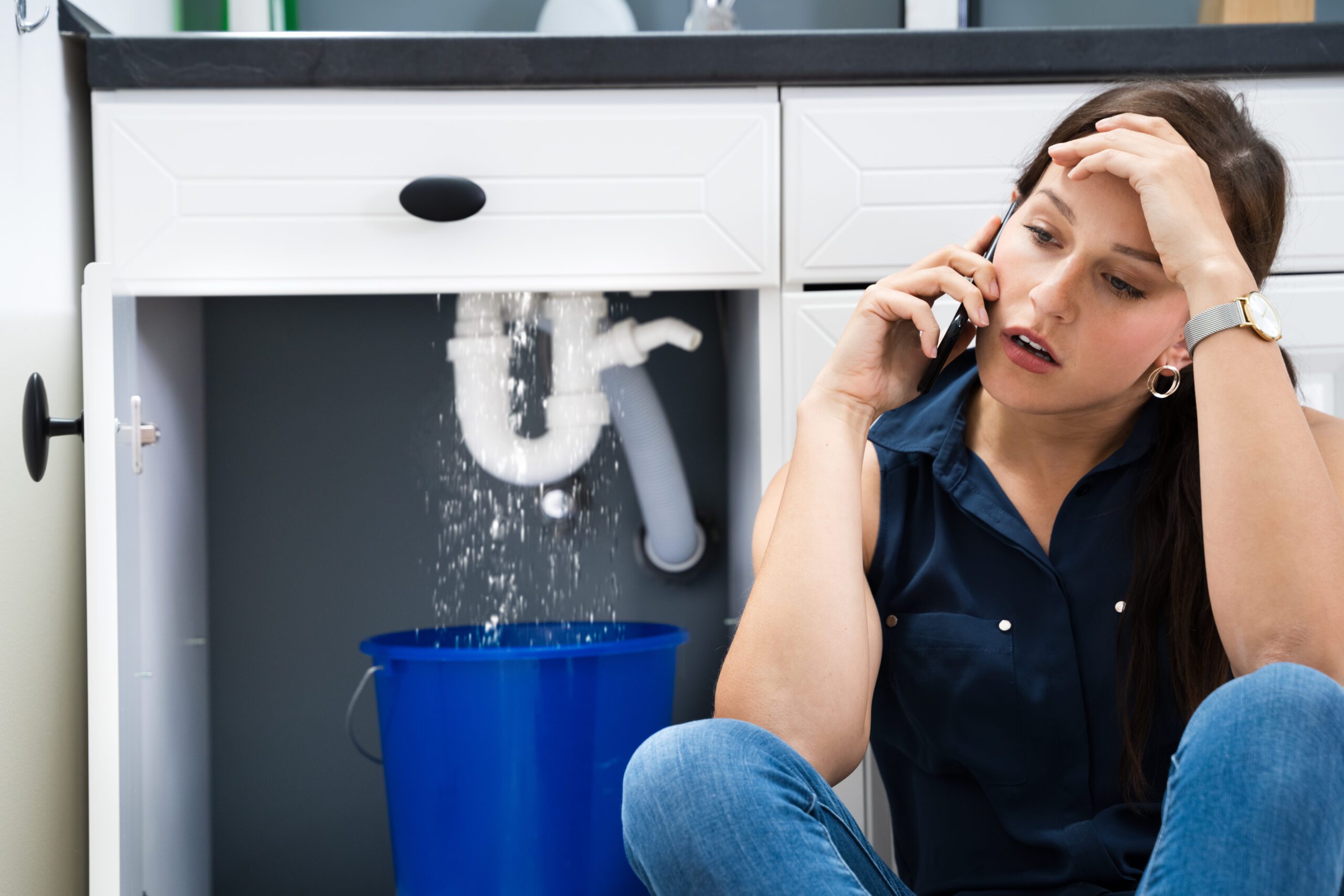
Water leaks in the ceiling can be distressing and require immediate attention to prevent damage to your home and belongings. Whether you notice a small drip or a major deluge, addressing the issue promptly can save you time, money, and headaches. This troubleshooting guide will walk you through the steps to identify the source of the leak and take appropriate action to resolve it.
First, here are the most common reasons you may be seeing leaking water from your ceiling.
Common Causes of ceiling leaks:
- Roof Damage: Missing or damaged shingles, flashing, or seals can allow water to infiltrate the roof and leak into the ceiling below.
- Plumbing Issues: Leaking pipes, burst supply lines, or faulty fittings within the walls or ceilings can cause water to seep through.
- HVAC Problems: Clogged condensate lines, malfunctioning air conditioning units, or damaged ductwork can result in water leakage.
- Bathroom Leaks: Leaking pipes, faulty seals around tubs, showers, or toilets, or damaged grout and caulking can lead to water infiltration.
- Condensation: Excessive humidity, poor ventilation, or temperature differentials can cause condensation to form and drip from the ceiling.
Safety First Before investigating the leak
Be sure to turn off the electricity to the affected area to prevent any risk of electrical hazards. It’s also smart to place a bucket or container beneath the leak to catch dripping water and prevent further damage to your belongings or flooring.
Try to Locate the Source: Identifying the source of the leak is crucial for effective repairs
Follow these steps to pinpoint the origin:
- Inspect the ceiling for signs of water stains, discoloration, or dripping water. Trace the path of the water to its highest point to locate the source.
- Check nearby plumbing fixtures, such as bathrooms, kitchens, and utility rooms, for visible leaks or water damage.
- Examine the roof for missing or damaged shingles, cracks, or gaps where water could penetrate.
- Look for signs of condensation or water buildup in the attic or crawl space above the affected area.
DIY Ceiling Leak Repairs
Depending on the cause of the leak, you may attempt the following DIY solutions:
- Patching Roof Leaks: Apply roofing cement or sealant to damaged areas or replace missing or damaged shingles.
- Fixing Plumbing Leaks: Tighten loose fittings, repair damaged pipes, or replace faulty components as needed.
- Sealing Bathroom Fixtures: Re-caulk or reseal around tubs, showers, and toilets to prevent water from seeping into the ceiling.
- Improving Ventilation: Install exhaust fans in bathrooms and kitchens, open windows to improve airflow, or use a dehumidifier to reduce moisture levels.
How to Repair a Ceiling with Water Damage
Repairing a ceiling that has suffered water damage due to a leak can be a challenging task. Whether the damage is minimal or extensive, addressing it promptly is crucial to prevent further deterioration and potential hazards such as mold growth. Here are the steps you should take to get your ceiling looking good-as-new:
- Assess the Damage: Determine the extent of the water damage. Look for any signs of mold or mildew growth, as well as areas where the ceiling may be sagging or weakened. If there is mold or mildew then that will need taken care of before you can repair the ceiling. A restoration company would be most helpful for this.
- Remove Damaged Materials: Carefully remove any damaged ceiling materials such as wet drywall or ceiling tiles. Use a utility knife to cut away any soggy or moldy sections. Be cautious during this process to avoid causing further damage or injury.
- Dry the Area: Allow the exposed ceiling structure to dry thoroughly before proceeding with repairs. You can use fans, dehumidifiers, or heaters to speed up the drying process. Ensure that the area is completely dry to prevent mold growth.
- Repair or Replace Ceiling Materials: Depending on the extent of the damage, you may need to repair or replace the damaged ceiling materials. For small areas, you can patch up holes or cracks with drywall compound or plaster. For larger areas or severe damage, you may need to replace entire sections of the ceiling. If you do need to replace drywall, make sure to cut it back to the nearest joists and add 2x4s along the joists to provide extra support. Cut drywall to the appropriate size to fit the missing hole and screw the drywall into the joists with drywall screws every 7 to 8 inches along the edges and every 12 inches in the center.
- Prime the Surface: Once the repairs are complete and the surface is dry, apply a coat of primer to the repaired area. This will help seal the surface and provide a good base for paint.
- Paint the Ceiling: After the primer has dried, paint the ceiling to match the surrounding area. Keep in mind that paint colors can change over time, so if you have kept your ceiling paint from years back it may not match exactly. Use a paintbrush or roller to apply the paint evenly, and allow it to dry completely between coats.
- Inspect for Mold: After the repairs are complete, inspect the area again for any signs of mold or mildew growth. If you find any, clean it thoroughly with a mixture of water and detergent, or use a commercial mold remover. Indoor air quality solutions such as a UV light, can help prohibit mold growth after water damage.
Prevention Tips
Once you’ve resolved the water leak in the ceiling, take proactive measures to prevent future incidents.
- Schedule Regular Maintenance: Inspect your roof, plumbing, and HVAC systems annually and address any issues promptly.
- Monitor Indoor Humidity: Use a hygrometer to measure humidity levels and maintain them between 30% and 50% to prevent condensation.
- Seal Vulnerable Areas: Apply waterproof sealant around windows, doors, and other openings to prevent water intrusion.
- Clearing HVAC Drainage: Use a wet/dry vacuum to clear clogged condensate lines or schedule professional HVAC maintenance.
- Upgrade Insulation: Improve attic insulation to regulate temperature and reduce the risk of condensation.
- Act Promptly: Address minor leaks and water damage promptly to prevent them from escalating into costly repairs or structural issues.
Professional Assistance
By following these steps and tips, you can effectively troubleshoot and address water leaks in your ceiling, safeguarding your home against damage and ensuring your comfort and peace of mind. If you encounter any challenges or require professional assistance, don’t hesitate to contact Quality Comfort Home Services at 513-620-4822 for expert guidance and support.


